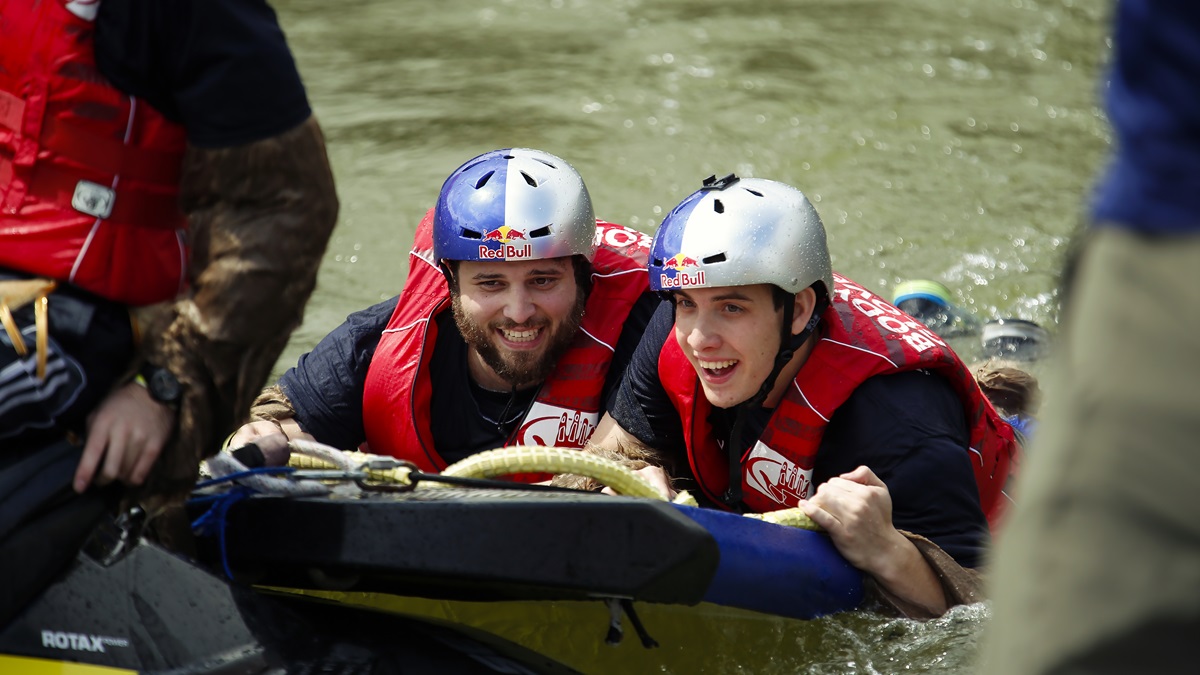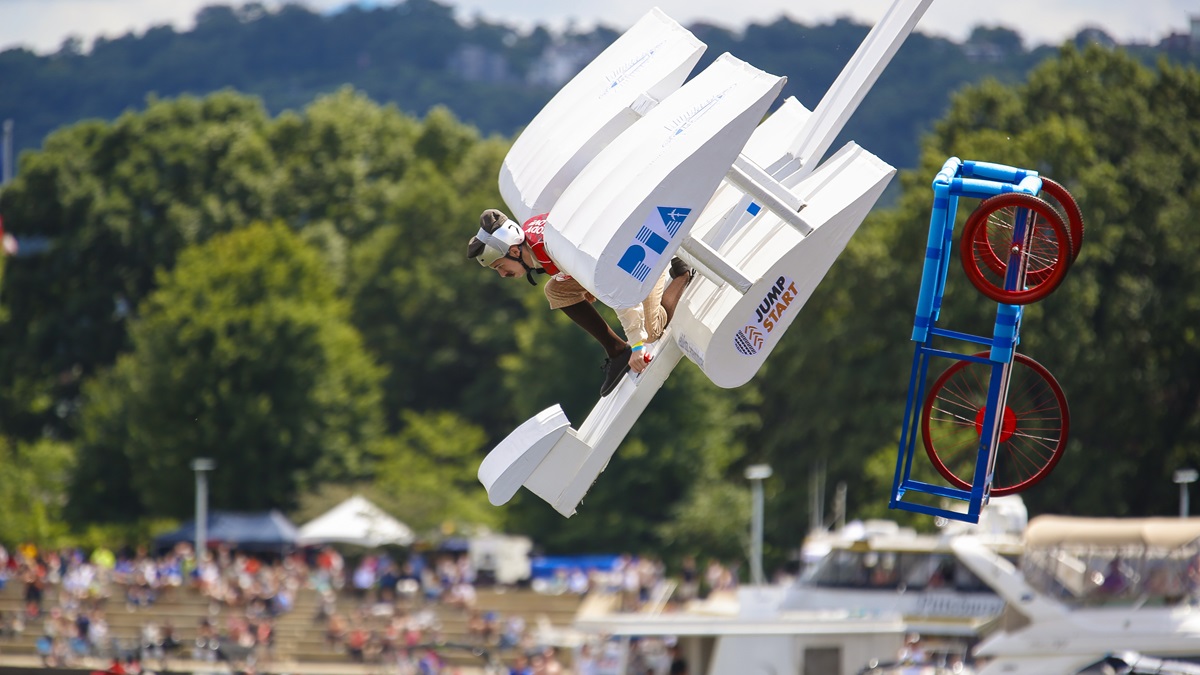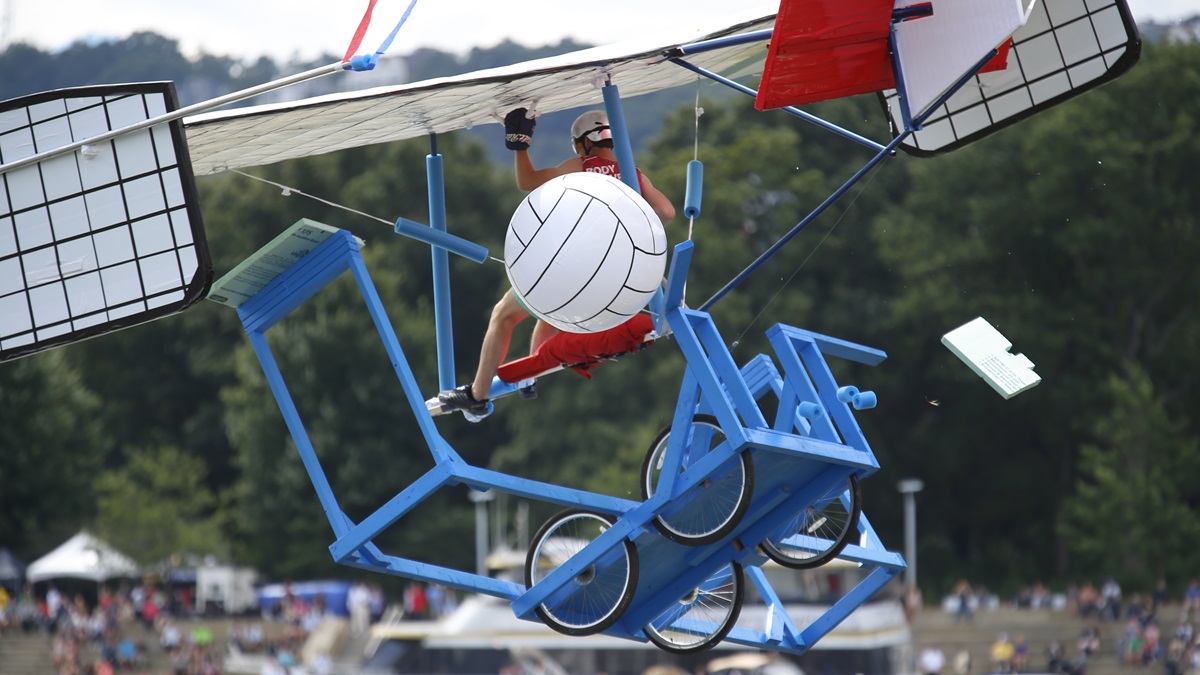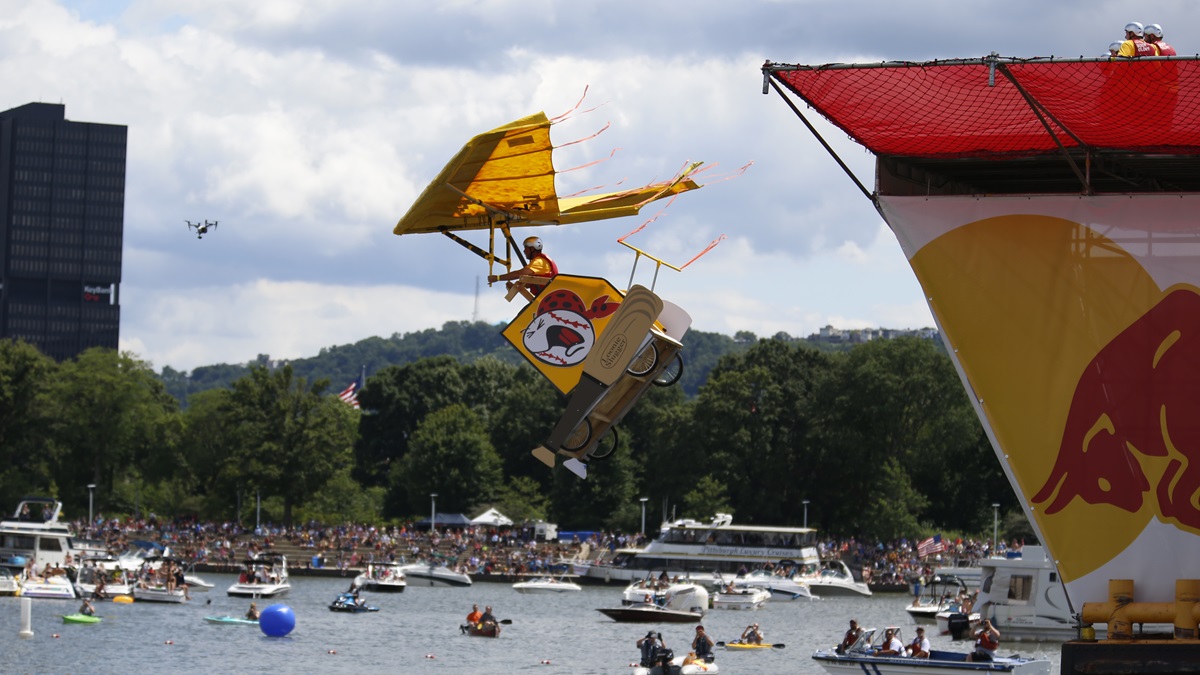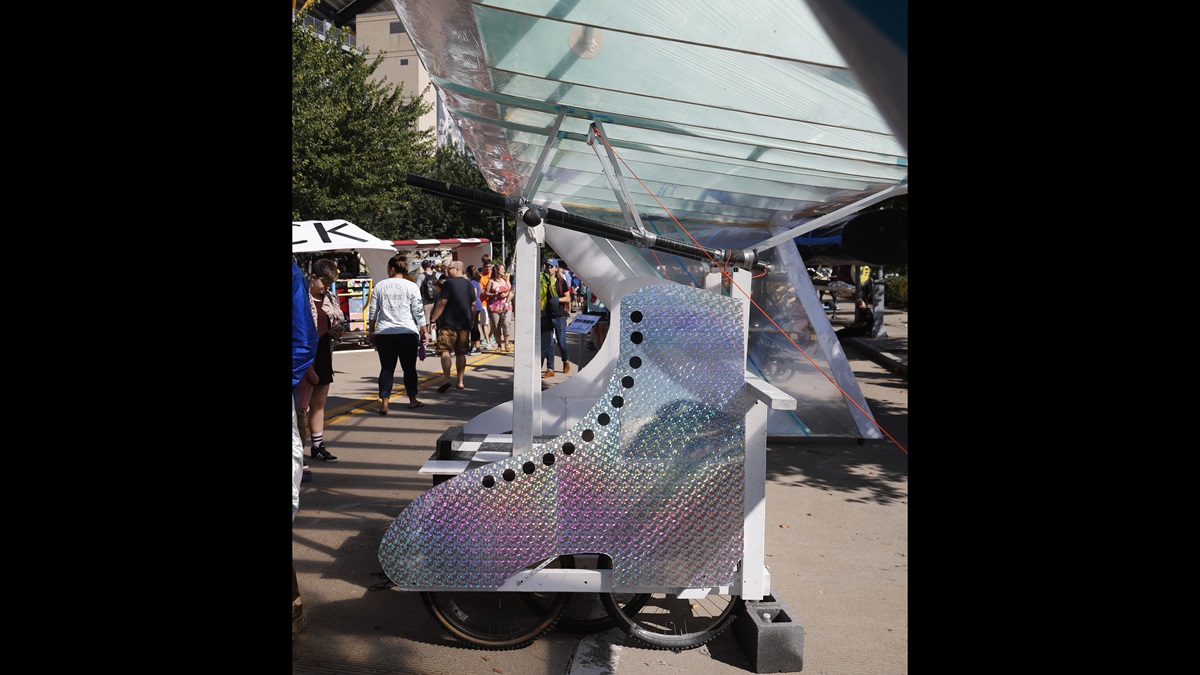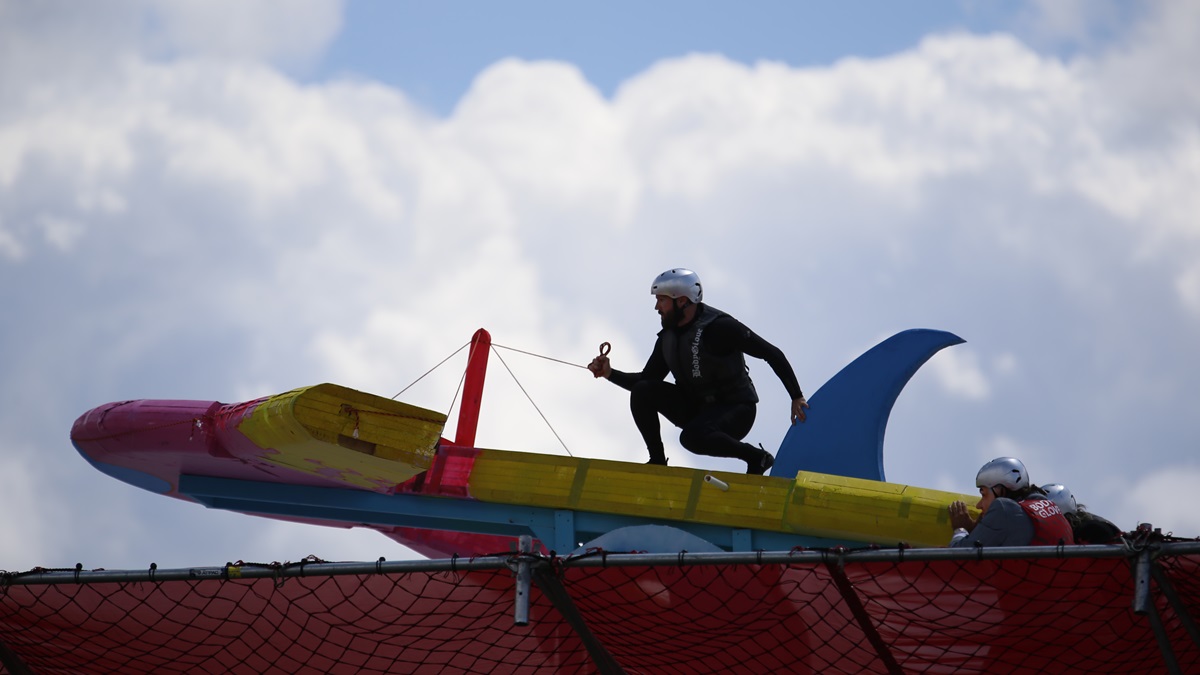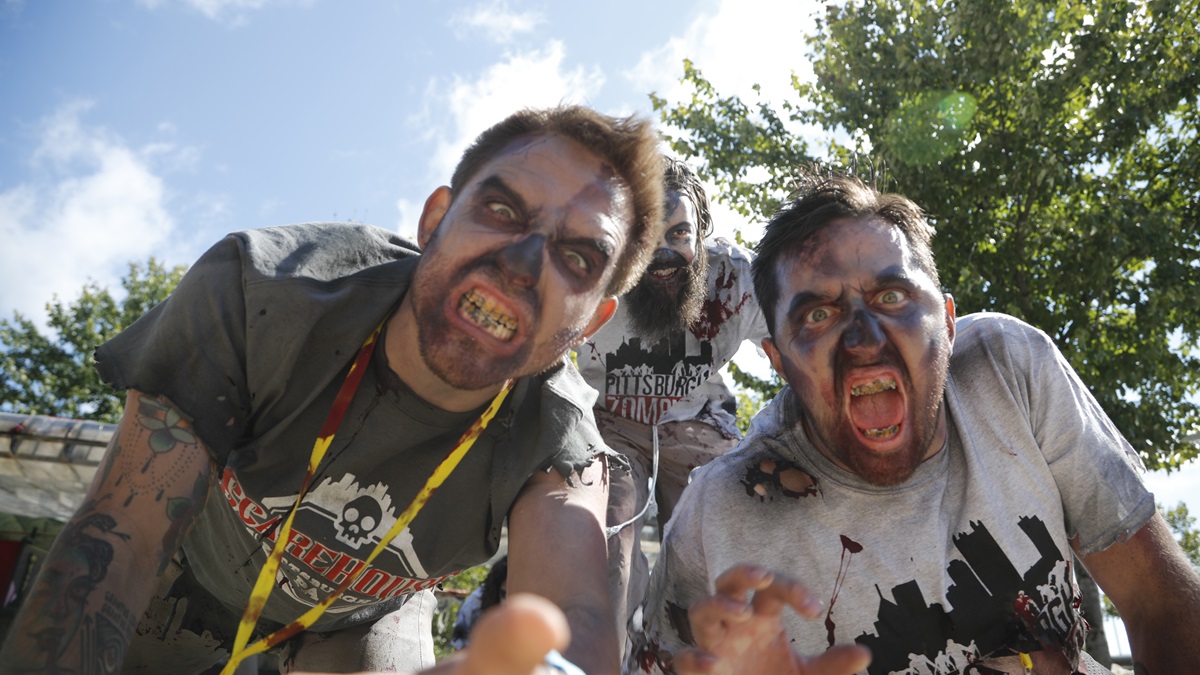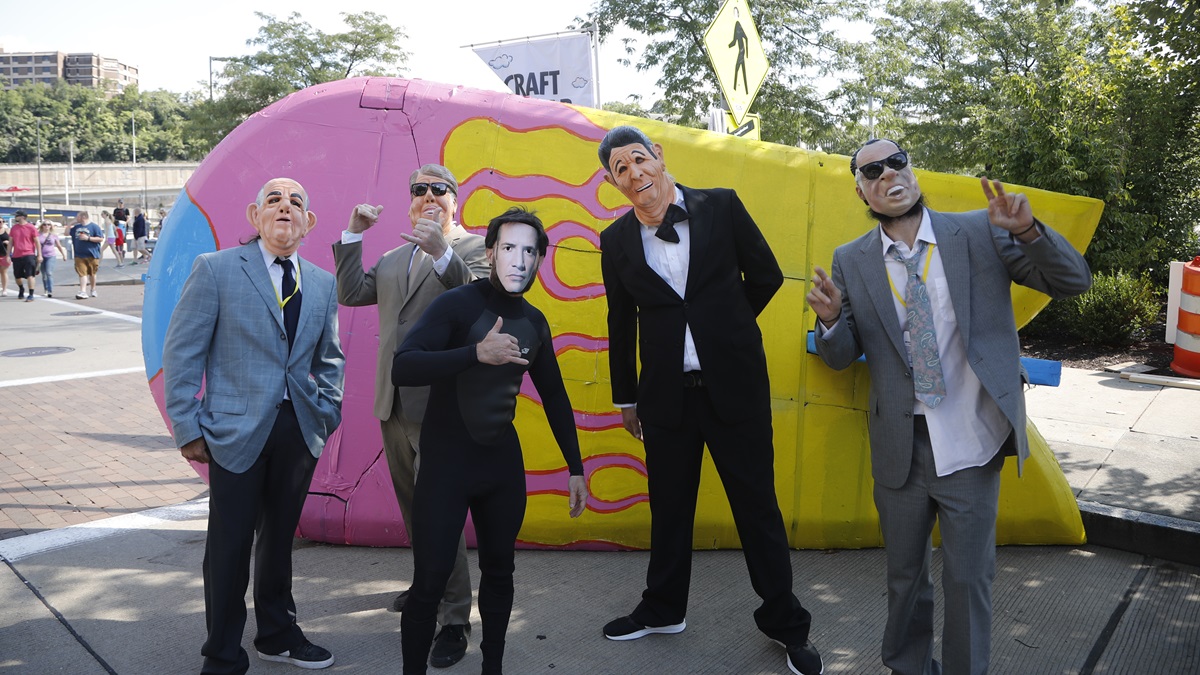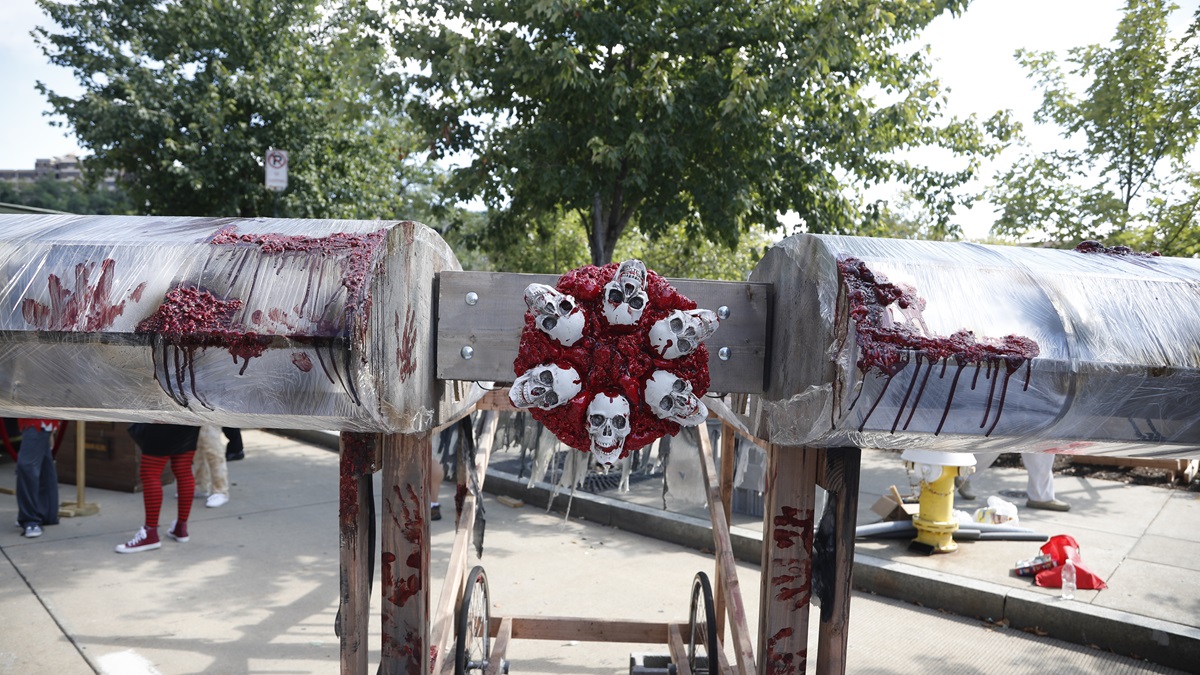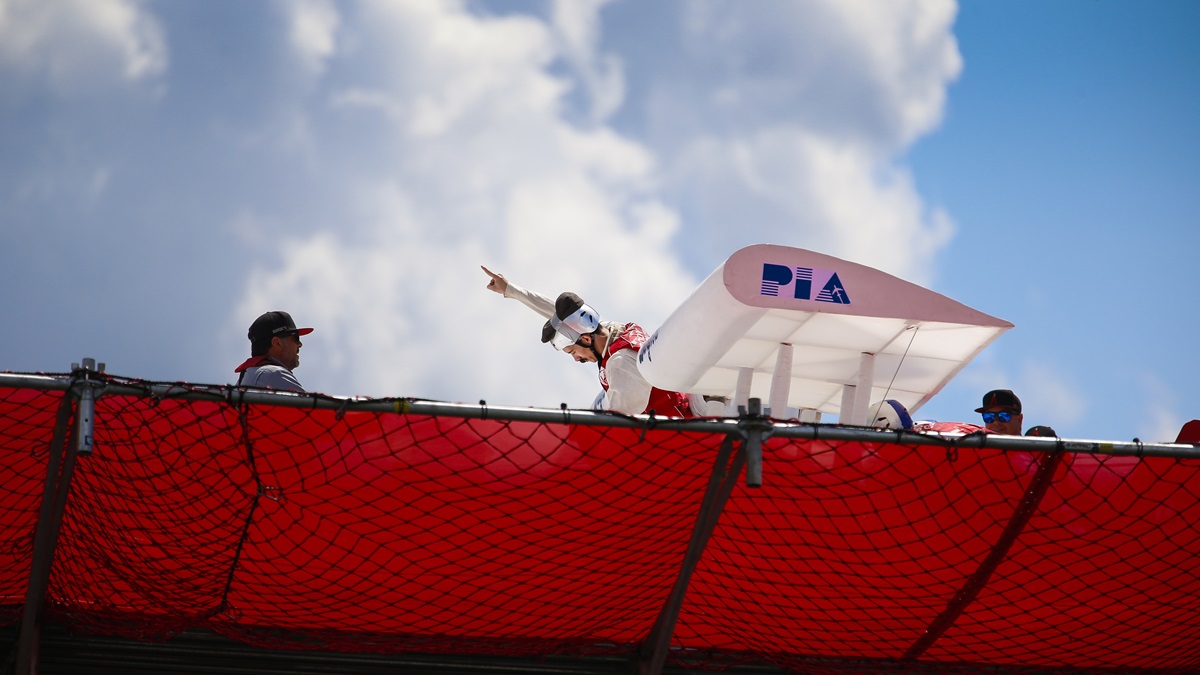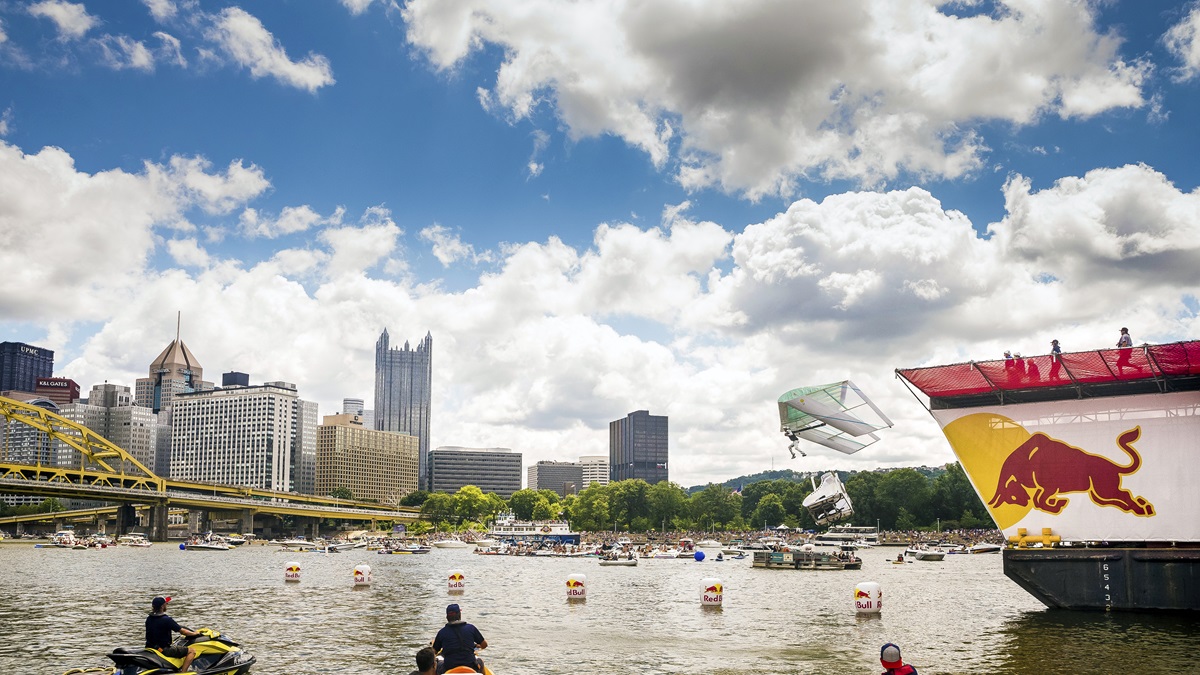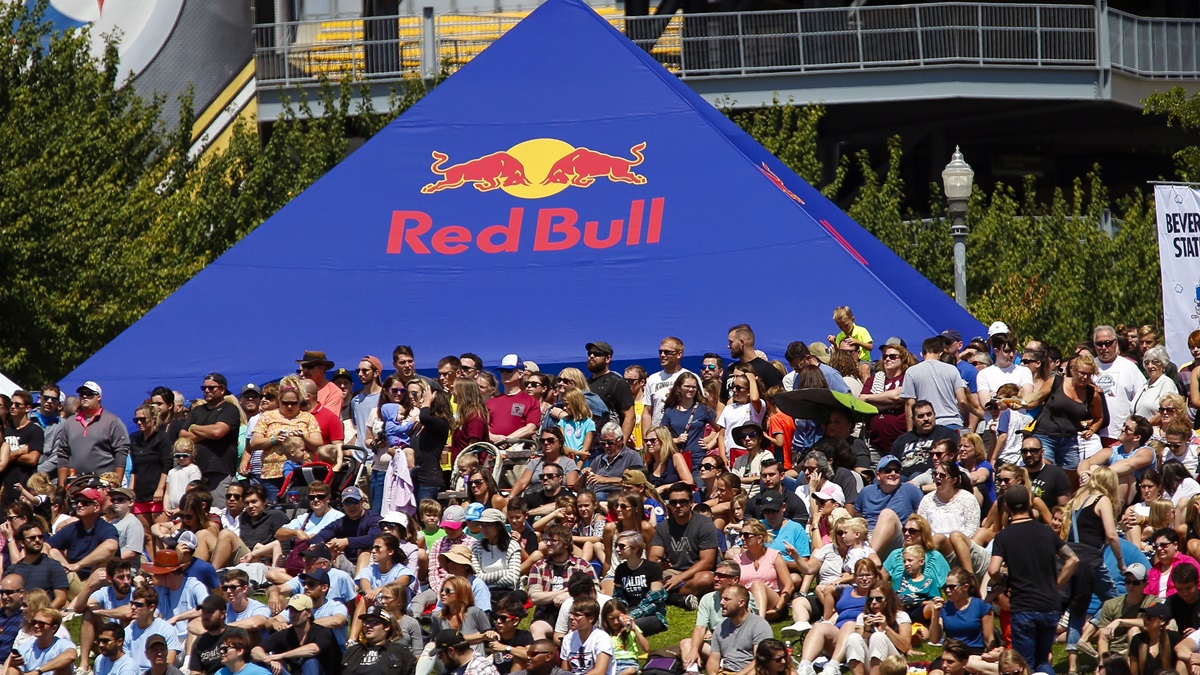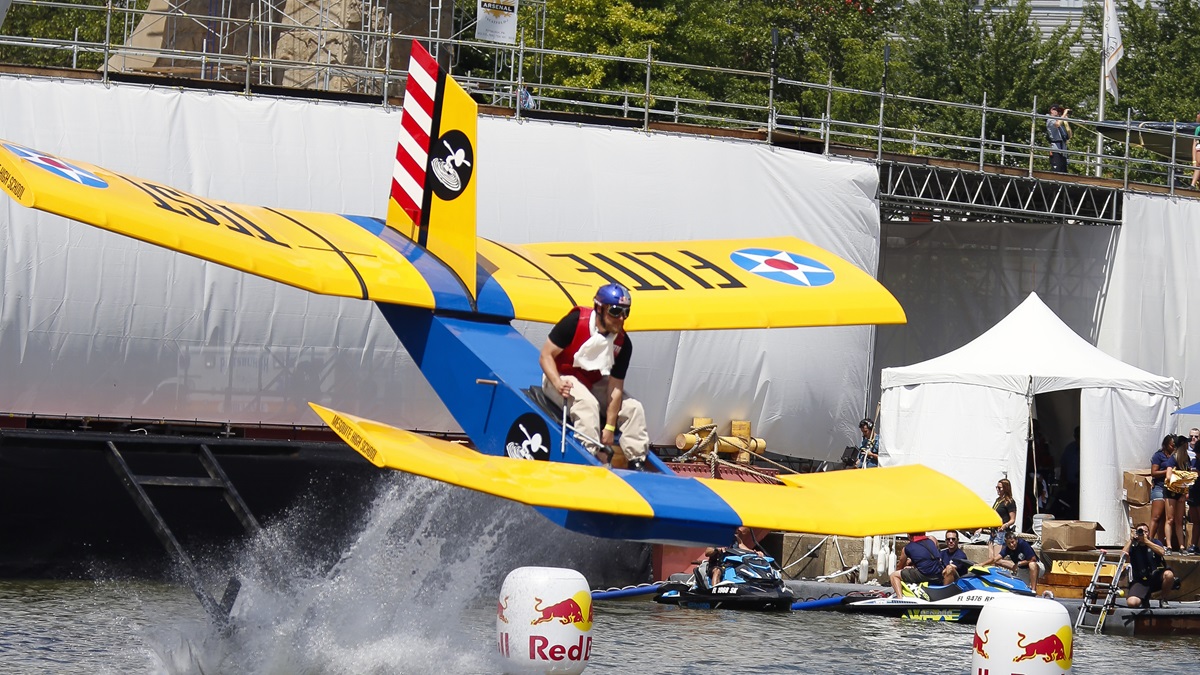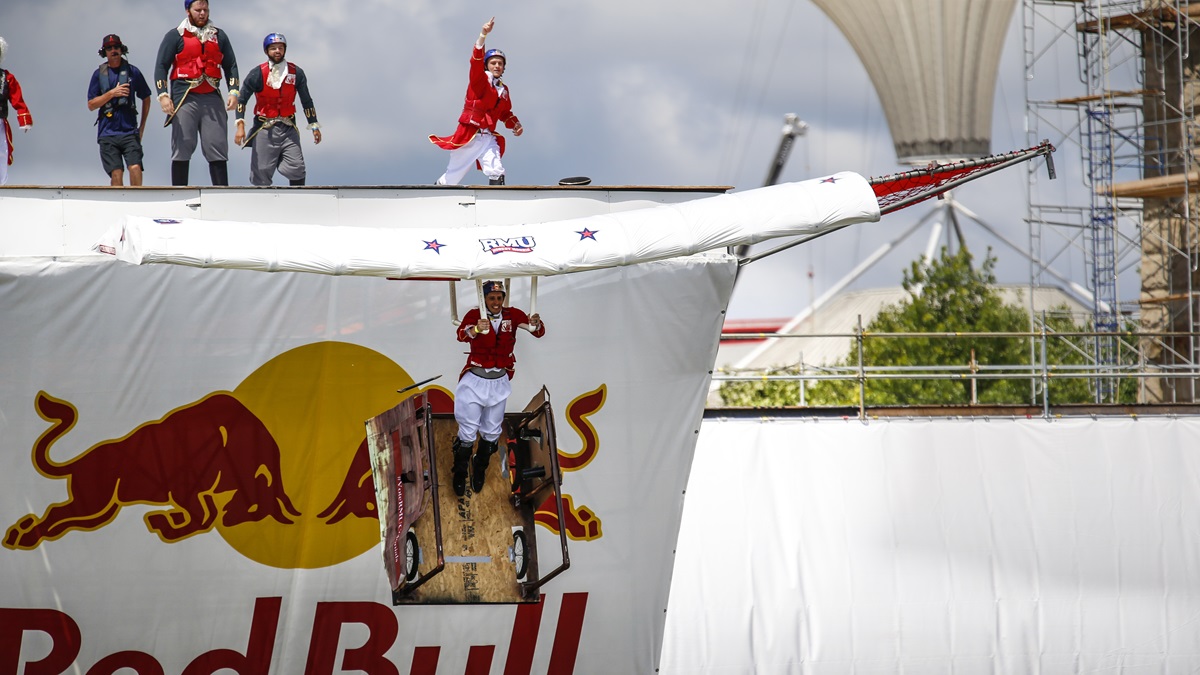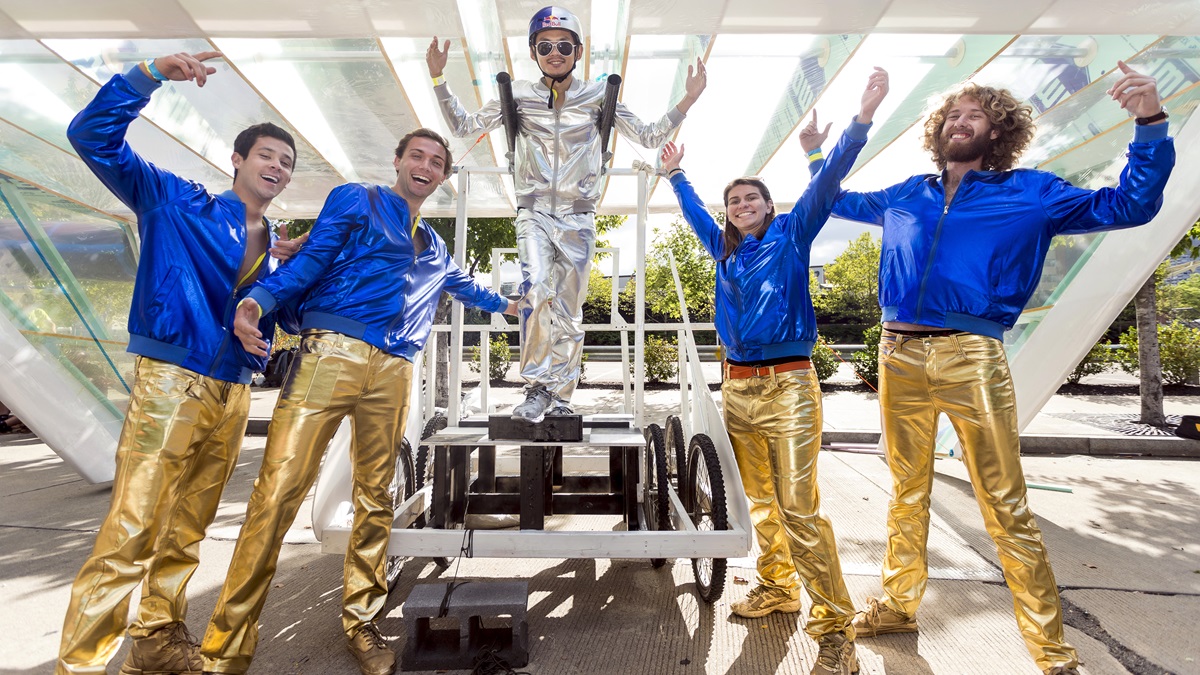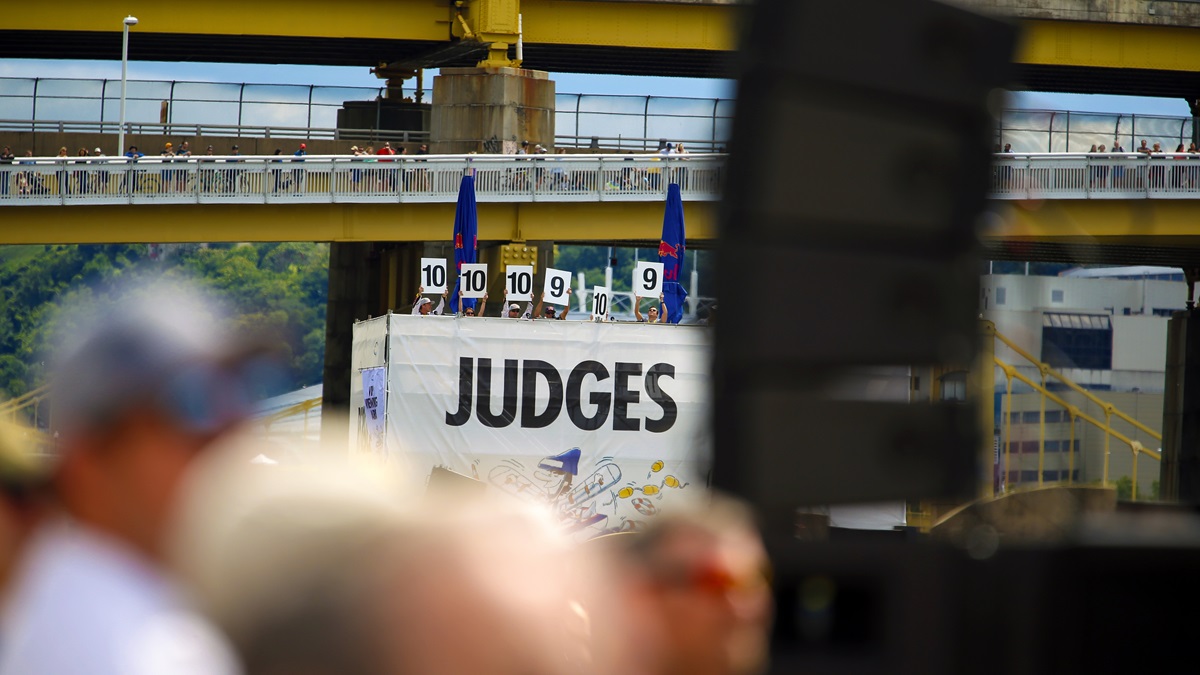A Wish For Wings That Work
Red Bull wants everyone to fly -- or try
An equally long time ago in 1991, a company selling energy drinks took as its slogan “Red Bull gives you wings,” and engaged its followers with an event called Flugtag (flight day in German), where participants launched homemade, human-powered flying machines with crazy themes and costumes off a 33-foot-high pier, rewarding the winners with cans of drink and other goodies.
Coincidence? We think not. Just another illustration of the fundamental urge to fly—whether you’re a penguin or a slightly crazy human. To slip the surly bonds of Earth intrigues us all.
Yes, it’s wacky
If this has you shaking your head and thinking what does an energy drink have to do with flying?—steady, captain. The world is wacky, and wacky sells. When Red Bull co-founders Dietrich Mateschitz and Chaleo Yoovidhya introduced their energy drink in 1987, reception was initially cool, but forward-thinking marketing and wacky ideas soon had Red Bull as the largest selling drink in the world (6.062 billion cans in 2016). Mateschitz is now the richest man in his native country of Austria, and Yoovidhya is the second-richest in his country, Thailand.
The company slogan, “Red Bull gives you wings,” is both a nod to the energy lift the highly caffeinated drink provides and an homage to flying. Red Bull is infamous for its daredevil antics—from its first event, the Birdman Rally (which became Flugtag), to the Red Bull Air Races, in which aerobatic aircraft dodge inflated pylons over courses on famous rivers and speedways, and the Red Bull Air Force, in which wingsuited humans launch from high cliffs into the abyss or parachute from helicopters. And one aspect is constant: flying. Whether in an aircraft or not, Red Bull is always talking about taking wing. Mateschitz is probably a main reason; he’s an active pilot who flies a Falcon 900 and a Piper Super Cub and has a collection of flying vintage aircraft in a museum near his home in Austria (see “Red Bulls Under Glass,” September 2014 AOPA Pilot). But it’s also marketing at its finest.
Consider August 5, 2017, on the banks of the Allegheny River in Pittsburgh. Thirty-seven teams of five have spent their spring studying aircraft and flying characteristics and have built their version of a flying machine that will now be vaulted from a 22-foot-high ramp out into the Allegheny, hoping to “fly” the longest distance while a crowd of tens of thousands of people watches.
Yes, it’s science
Not all the contestants delve deeply into aeronautical design for Flugtag, but there are many who do. Pittsburgh’s “fan favorite” was the team Flite Testers, a group organized by the aviation video production company Flite Test in North Canton, Ohio. Company President Josh Bixler promotes the joy of flying and the passion to be a pilot by enlisting the aid of middle school science, technology, engineering, and math (STEM) students who research and then design the competing aircraft. For this entry (Flite Test’s fourth), middle schools and their students spent 65 days and $1,200 on a Burt Rutan-inspired craft that looks and—almost—flew like a real airplane. Another group, from the Pittsburgh Institute of Aeronautics (PIA) and calling themselves the Wright Burgh’ers, studied blueprints of the Wright Flyer and constructed a flying machine that their 109-pound pilot flew in period costume to look like Orville Wright. Wright established PIA with Glenn Curtiss in 1929, so a Wright brothers theme was only fitting.
In Pittsburgh there were teams comprised of civil engineers, aeronautical college students, and, yes, flight instructors and pilots. Of course there were also teams made up of theater students, Pittsburgh sports fans, and one guy and his bachelor party. For while the competition is judged on flight distance and flying machine, it is also ranked on theme and the musical skit the five-member team must perform before they launch their aircraft off the ramp.
Flugtag events take place all over the world, and they were introduced in this country in 2002. Pittsburgh was the first of two U.S. events in 2017; the second was scheduled in Nashville September 23. More than 130 designs were submitted for the Pittsburgh competition and 40 teams were chosen; 37 competed. Red Bull judges score the competitors on flight distance, creativity of the craft, and showmanship. Teams bring their craft on a cart onto the flight deck, perform a musical skit relative to their craft’s design (choreography to ragtime music, for example, for the Wright Burgh’ers); and then the team members don helmets; the pilot gets into the craft; and the four remaining team members push it off the edge. Hopefully their craft is aerodynamically designed to soar over the distance markers in the water, but many simply plunge directly down in the drink. The rest of the team is then expected to jump in after their pilot. The wingspan of the aircraft must not exceed 30 feet, and the weight must not exceed 450 pounds, including the pilot. Designs were due May 1 and selected May 8 for the Pittsburgh competition.
Whose wings worked?
We wished for Flite Testers or Wright Burgh’ers to do well since they worked hard to study and define a flying machine, but the wind, the drama, and the skills of the pilots all were in play on this breezy summer day. Flite Testers flew the third longest, at 63 feet, and were the Pittsburgh fan favorite, winning the Peoples’ Choice Award, tallied from online votes collected during the event. But because of poor scores for creativity and their skit, they came in thirty-sixth. The aircraft’s canard-wing design was nose heavy and dropped like a stone from the edge. A strong tailwind didn’t help either.
The Wright Burgh’ers, whose dean of academics Jason Pfarr said his team had hoped to set a record, were disappointed when, eight to 10 feet from the edge of the launch site, the left front wheel on their cart snapped. The pilot was unable to right the craft, and it plunged off the pier nose down with the cart. “Our team’s number one goal was to have this thing fly,” Pfarr said. “We had a lot of fun trying.” Because Red Bull takes possession of the craft as soon as it hits the water, this team of mechanics were denied the ability to analyze what went wrong—or right, for that matter.
The record for the longest flight during Flugtag is 278 feet (set in Long Beach, California, in 2013). On this day in Pittsburgh the team called Survivor Tractor—a big purple flying tractor raising money for cancer research—flew the farthest, 121 feet. But they came in second behind the team Flight of the Roxbury, designed by aerospace engineers from McLean, Virginia, which flew only 78 feet but scored higher on their musical skit (oh, come on, bob your head to the right and think of Steve and Doug and the song What Is Love in the cult comedy movie).
Still not convinced this has anything to do with flying? How about the fact that more than 100,000 people spent a day discussing what they would have done to create an aircraft that would fly?
And the winners are awarded the chance to skydive with the Red Bull Air Force—Red Bull, it seems, really does give you wings.
Email [email protected]

